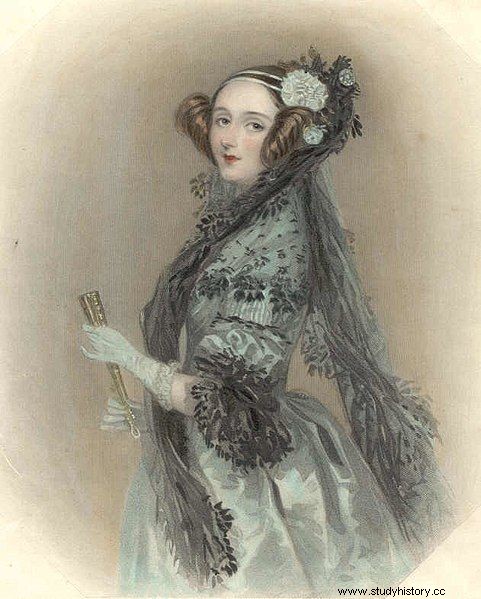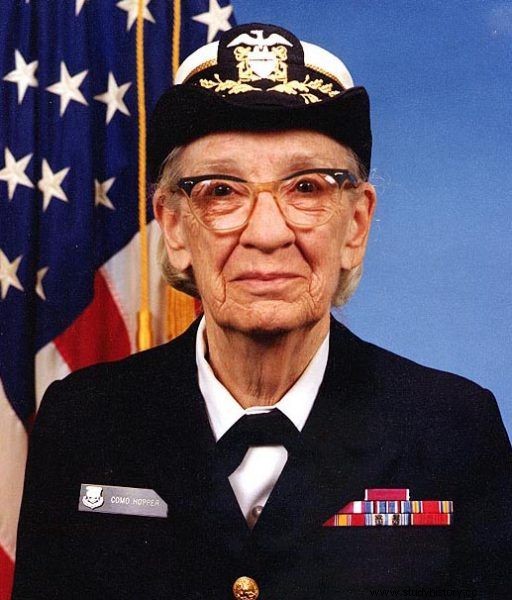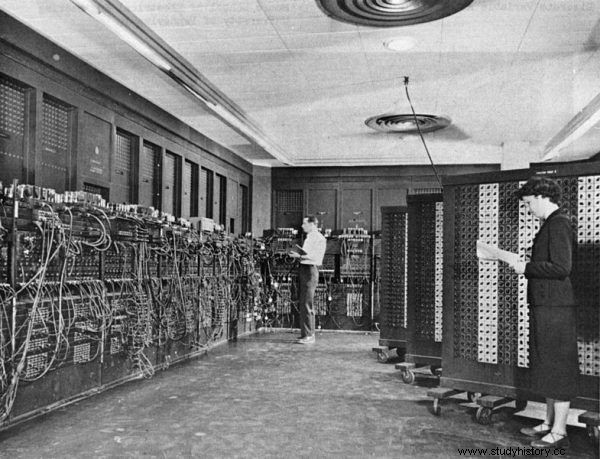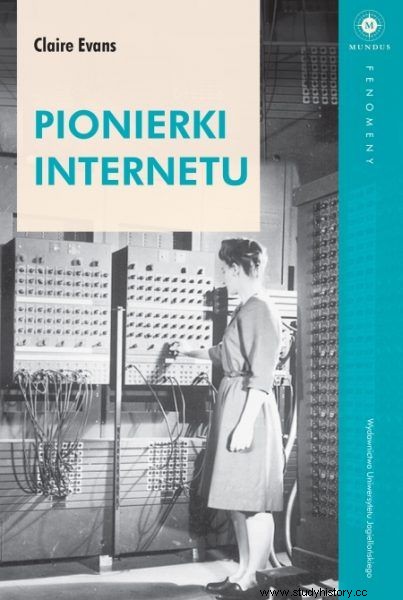Uncompromising mathematicians, outstanding coders, programming aces. It is to these visionaries that we owe the development of the Internet. These are the mothers of modern computing.
When we think about the history of new technologies, we imagine eccentric men locked in cellars. This image is also perpetuated by popular culture. History for a time forgot about the women who breathed life into computers. And the first of them lived a surprisingly long time ago…
19th century programmer? Ada Lovelace
Former daughter of the famous poet Lord Byron and Annabella Milbanke. "It was created out of a combination of peculiar forces":he is sensitive, torn by emotions, a mad artist, she is "a brilliant aristocrat with a penchant for mathematics." Although Ada never met her father, she took over his crazy imagination.

Ada Lovelace is sometimes considered the first programmer
She was a peculiar child. Sick, over-developed, endowed with extraordinary sensitivity and a sharp, analytical mind. She played the violin, designed flying machines, outperformed her teachers. As a teenager, she developed a friendship with the famous British scientist, Mary Somerville, who encouraged her to pursue deeper studies. It is also thanks to her she met an outstanding mathematician, called the father of computers - Charles Babbage. It was him that she dedicated her mental life to.
Her iconoclastic way of thinking spoke to her - she admired the imagination of his inventions. Raised in isolation, under the strict watchful eye of her mother, determined to do anything to curb any trace of Lord Byron's poetic tendencies, Ada felt that Babbage appreciated her. Like her, he understood that number operations - the highest levels of mathematical reasoning - had profound metaphysical implications. This math was itself a form of poetry.
Babbage began work on the creation of an analytical machine, which was commented on in an article by an Italian engineer - L. F. Menabrea. Ada decided to translate the text while correcting any mistakes in it. In her notes, she also created a diagram that is considered the first computer program. Though the analytical machine was never completed, Ada's comments predated IT literature by almost a century.
A new programming language was named after her in the 1980s.
A pioneer in programming. Grace Hopper
The achievements of this amazing woman undoubtedly deserve a screening. For years, she served in the United States Navy, where she earned the rank of Rear Admiral. She was the first female PhD from Yale University where she lectured after the war.
She was thirty-six when the United States joined World War II. All people associated with her decided to go to war. Grace too felt the burden of a patriotic duty. However, her plans were hindered by a decidedly underweight - she was considered unfit for service. She finally blackmailed the University of Vassar to be allowed to enter the service:
She gave the university an ultimatum that was not actually one:six months to make a decision, or she will leave anyway. And although she was too old and too thin, and her eyesight was almost as weak as her brother's, she did just that. The day the bombs fell on Pearl Harbor, there was a path of perfectly decent middle-class life in front of Grace, but she hadn't taken a single step on it.

Grace Hopper is an American IT pioneer
Grace wasn't a man, so she was never sent to sea. She was assigned a position in the Navigational Calculation Project Office. However, although she did not fight, she "defeated two beasts" :head of the project to whom she was assigned, explosive Lieutenant Howard Aiken, and an IBM-built machine, Mark I. She was given a week to learn to program a "beast".
Being self-taught by nature, she took up this challenge. She pored over the code book and questioned two second lieutenants (...). She sat late into the night trying to find out about the construction of the machine by studying the Mark I plan and wiring diagrams. Sometimes she slept at her desk.
During and after the war, she worked diligently on the first translators and programming languages, and wrote the first compiler for UNIVAC I. It was she who propagated the term "bug". At Eckert-Mauchly Computer Corporation, helped design the first digital computer for wide-ranging commercial applications .
Since 1971, the Association for Computing Machinery has awarded an award named after it for outstanding contribution in the field of computer science.
Programming aces. Six from ENIAC
ENIAC, the first computer constructed in the years 1943-1945, was operated by six exceptional women who today we can boldly call mothers of computer science :Kay McNulty, Jean Jennings, Betty Snyder, Marlyn Wescoff, Fran Bilas, and Ruth Lichterman. Forgotten, forgotten for years (they were not even invited to the 50th anniversary of ENIAC!), not described in photos , they triumphantly returned, incl. thanks to the groundbreaking book by Claire L. Evans Internet Pioneers :
The six from ENIAC trained on paper, writing programs for a device they had not yet seen. When they were finally shown the finished ENIAC in December 1945, they saw a massive U-shaped block of black steel in a room that barely housed a few more pieces of furniture. (…) Programming it, as the Six found out, was not about working at a desk. Women had to stand inside ENIAC to "plug in" each task, sequencing the units with hundreds of cables and around three thousand switches.

Glen Beck (in the background of the photo) and Betty Snyder (in the foreground) program ENIAC at the ballistic computing center in Philadelphia; between 1947 and 1955
As it turned out, designing a computer and its operation are two completely different things. The men working on creating ENIAC had a "slightly laid back" approach to programming. They completely ignored the task preparation procedure, did not think about how the machine would work. This task fell to the female development team. It is thanks to them that the premiere show prepared for the scientific and military community turned out to be a great success.
Thanks to the titanic work of Betty Jean Jennings and Betty Snyder, trajectory calculations were presented that made a stunning impression on the visitors and saved the entire venture.
The six from ENIAC was only appreciated in the nineties when all the programmers were honored by placing them in the Hall of Fame of Women in Technology International.
However, there are many more forgotten women in the history of the Internet. Amazing hackers, cyber activists, punk programmers. You can read about them in the latest book by Claire L. Evans Pioneers of the Internet .

